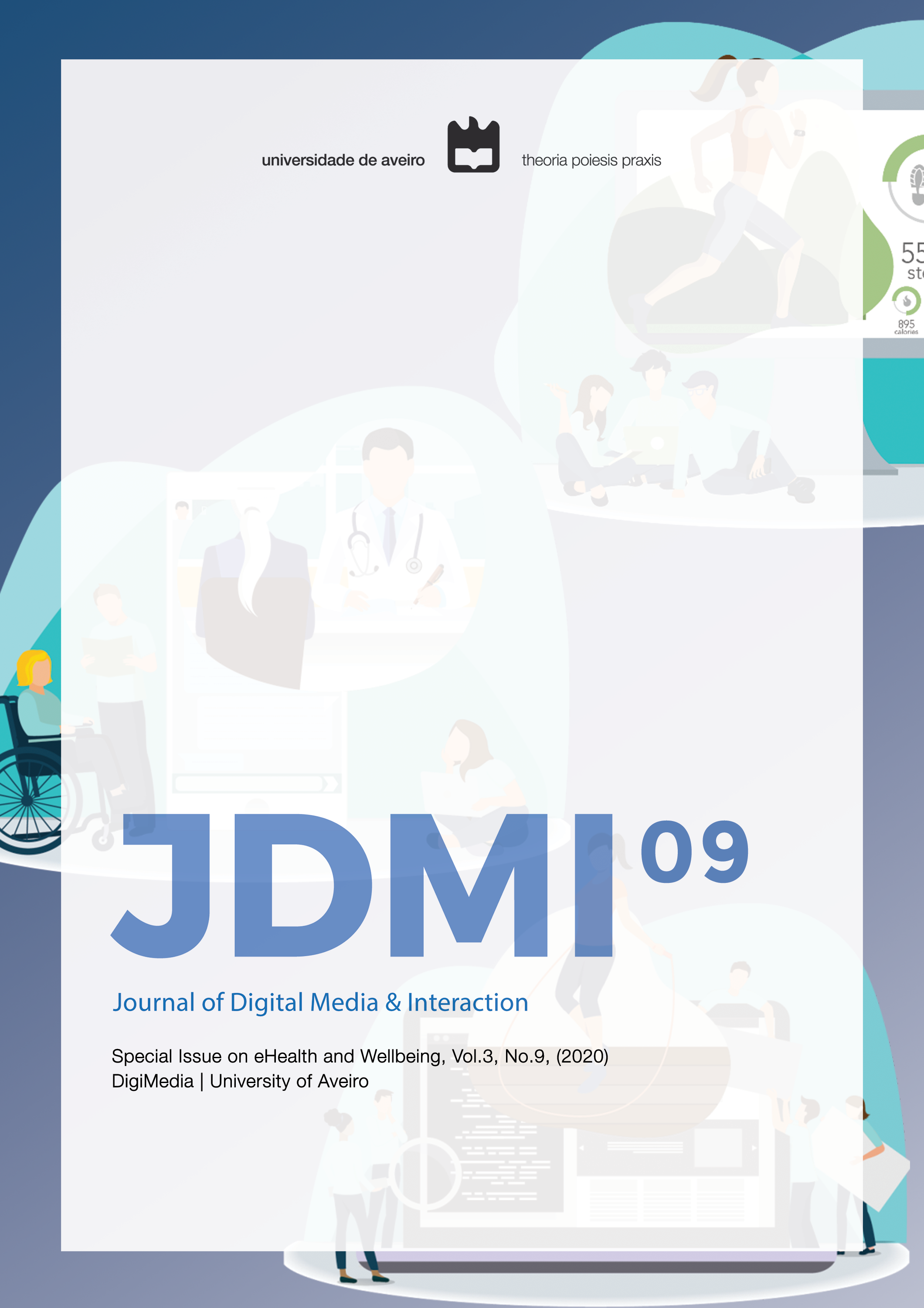Updating Bem-me-ker: An User-Centred Approach to Redesigning an Onboarding Application for Cancer Patients
Abstract
This paper presents the research and development of a redesign of Bem-me-ker – an application of the Portuguese Oncology Institute (IPO) of Porto. For this project, we resorted to a user-centric methodology featuring a survey of the current market and the context of the digital health industry, interviews and usability tests with patients, caregivers and stakeholders. Such user-centric methodology proved to be efficient in responding to their needs, with satisfactory results. Its contributions are focused on the incorporation of the concept of patient navigation into the design of an onboarding application, transforming it into a virtual manager of the disease for cancer patients, and with the ultimate goal to improve their wellbeing and quality-of-life. We see that this approach is also capable of being adjusted to the needs of other institutions and patients, thus contributing to the improvement of the national health service, providing digitally optimized information to citizens.
Downloads
References
Babu, R. (2019). The conversational designer’s guide to AI assistants. Retrieved July 26, 2020, from https://uxdesign.cc/the-conversational-designers-guide-to-ai-assistants-by-ruben-babu-6aa45de578f0
Fiscella, K., Ransom, S., Jean-Pierre, P., Cella, D., Stein, K., Bauer, J. E., ... Walsh, K. (2011). Patient-reported outcome measures suitable to assessment of patient navigation. Cancer, 117(SUPPL. 15), 3603–3617. https://doi.org/10.1002/cncr.26260
Freeman, H. P., & Rodriguez, R. L. (2011). History and principles of patient navigation.Cancer, 117(SUPPL. 15), 3537–3540. https://doi.org/10.1002/cncr.26262
Goodwin, K. (2009). Designing for the digital age: how to create human-centered products and services. Indiana: Wiley (First Edit). Indianopolis: Wiley Publishing, Inc. Retrieved from http://scholar.google.com/scholar?hl=en&btnG=Search&q=intitle:Designing+for+the+Digital+Age#2
Harte, R., Glynn, L., Rodríguez-Molinero, A., Baker, P. M., Scharf, T., Quinlan, L. R., & ÓLaighin, G. (2017). A Human-Centered Design Methodology to Enhance the Usability, Human Factors, and User Experience of Connected Health Systems: A Three-Phase Methodology. JMIR Human Factors, 4(1), e8. https://doi.org/10.2196/humanfactors.5443
Hartson, R., & Pyla, P. S. (2012). The UX book, process and guidelines for ensuringa quality user experience. Morgan Kaufmann (Vol. 37). https://doi.org/10.1145/2347696.2347722
Jassova, B. (n.d.). Conversation Design for Chatbots: The Ultimate Guide | Landbot. Retrieved July 26, 2020, from https://landbot.io/blog/guide-to-conversational-design/
Pearl, C. (2017). Designing Voice User Interfaces: Principles of Conversational Experiences (Second). Beijing, Boston, Farnham, Sebastopol, Tokyo: O’Reilly. https://doi.org/10.1016/j.prp.2013.11.006
Pennic, F. (2018). Report: Digital Health Marketto Reach $379B by 2024 -HIT Consultant. Retrieved July 26, 2020, from https://hitconsultant.net/2018/06/18/digital-health-market-2024/#.Xx1QNy3MxT7
Preece, J., Rogers, Y., & Sharp, H. (2015). Interaction Design: Beyond Human-Computer Interaction (Fourth). John Wiley & Sons, Ltd.
Reeves, B., & Nass, C. (1996). MEDIA EQUATION: HOW PEOPLE TREAT COMPUTERS, TELEVISION, AND NEW MEDIA LIKE REAL PEOPLE AND PLACES. Cambridge University Press. https://doi.org/10.1300/J105v24n03_14
Reshmi, S., & Balakrishnan, K. (2016). Implementation of an inquisitive chatbot for database supported knowledge bases. Sadhana -Academy Proceedings in Engineering Sciences, 41(10), 1173–1178. https://doi.org/10.1007/s12046-016-0544-1
Sousa, A. P. de. (2017). A interface na e-Health: proposta de princípios de design para a credibilidade e a confiança. Universidade de Aveiro e Universidade do Porto. Retrieved from https://ria.ua.pt/handle/10773/21059
Ugalmugle, S., & Swain, R. (2020). Digital Health Market Share Trends 2020-2026 Growth Report. Retrieved July 26, 2020, from https://www.gminsights.com/industry-analysis/digital-health-market
Unger, R., & Chandler, C. (2009). A Project Guide to UX Design: For User Experience designers in the field or in the making (First Edit). New Riders.
Zhao,Y., Ni, Q., & Zhou, R. (2018). What factors influence the mobile health service adoption? A meta-analysis and the moderating role of age. International Journal of Information Management, 43(May 2017), 342–350. https://doi.org/10.1016/j.ijinfomgt.2017.08.006
Copyright (c) 2020 Inês Ferraz, Marta Reis, Pedro Cardoso, Andreia Pinto de Sousa, Bruno Giesteira, Ricardo Melo

This work is licensed under a Creative Commons Attribution-NonCommercial-NoDerivatives 4.0 International License.
Authors who publish in the JDMI agree to the following terms:
-
Authors retain copyright and grant the journal the right of first publication with the work simultaneously licensed under a Creative Commons BY-NC-ND 4.0. This licensing allows others to share the work with no changes and acknowledgement of the work's authorship and initial publication in this journal, but not for commercial use.
-
Authors are able to enter into separate, additional contractual arrangements for the non-exclusive distribution of the journal's published version of the work (e.g., post it to an institutional repository or publish it in a book), with an acknowledgement of its initial publication in this journal.
-
Authors are permitted and encouraged to post their work online (e.g., in institutional repositories or on their website) after publication, as it can lead to productive exchanges, as well as earlier and greater citation of published work.
Copyrights to illustrations published in the journal remain with their current copyright holders.
It is the author's responsibility to obtain permission to quote from copyright sources.
Any fees required to obtain illustrations or to secure copyright permissions are the responsibility of authors.
Additional Information
All correspondence concerning contributions, books and other review material should be sent to: deca-jdmi@ua.pt


